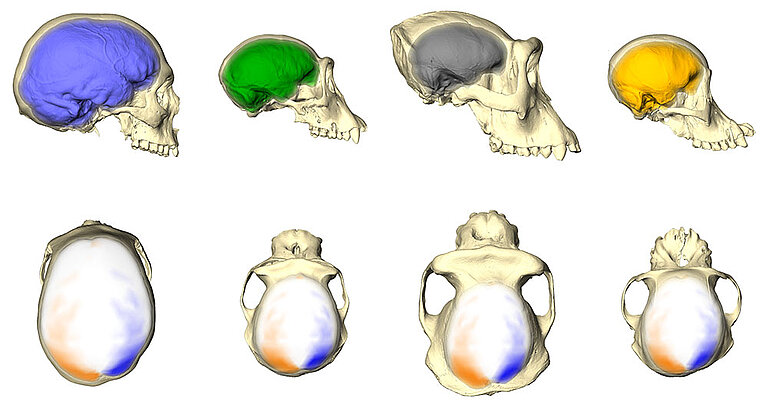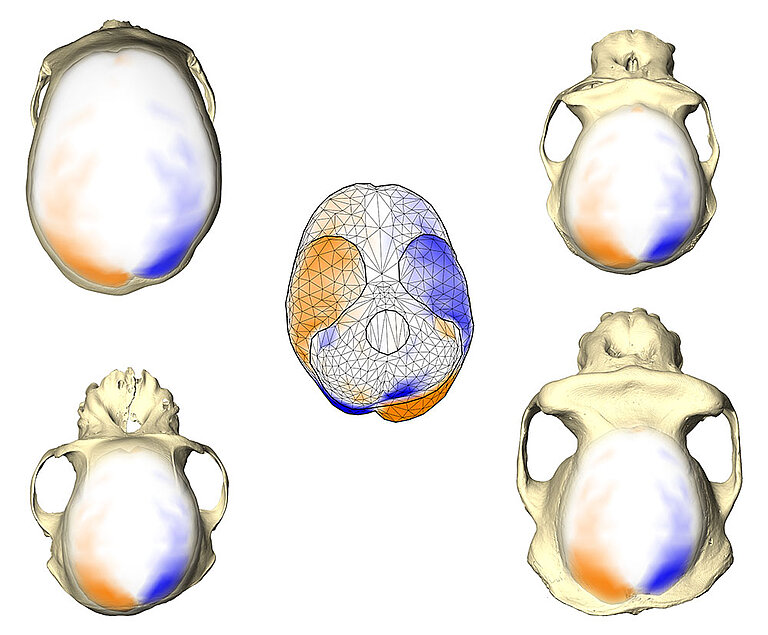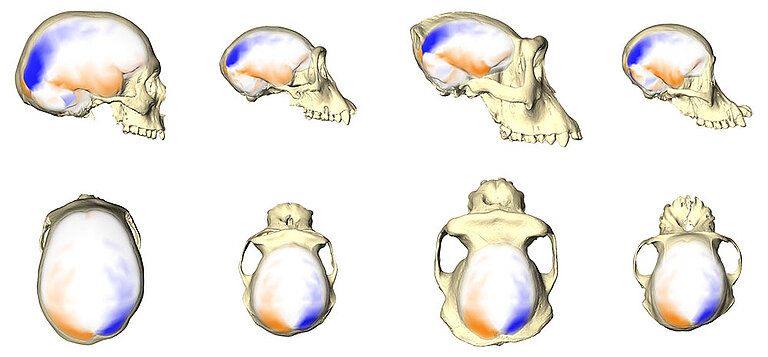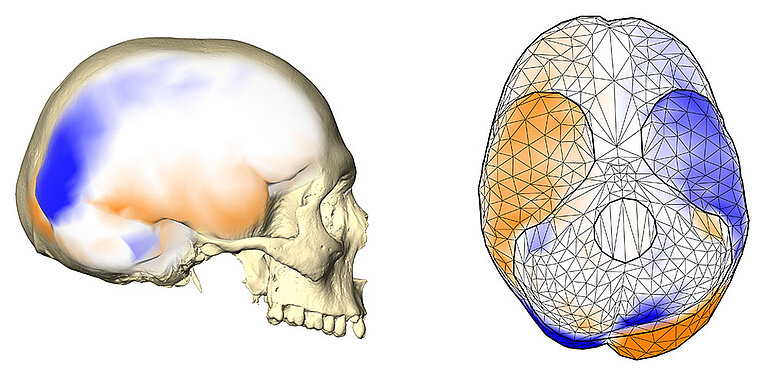Researchers were not right about left brains
Brain imprints on cranial bones from great apes and humans refute the long-held notion that the human pattern of brain asymmetry is unique
The left and right side of the brain are involved in different tasks. This functional lateralization and associated brain asymmetry are well documented in humans, but little is known about brain asymmetry in our closest living relatives, the great apes. Using endocasts (imprints of the brain on cranial bones), scientists now challenge the long-held notion that the human pattern of brain asymmetry is unique. They found the same asymmetry pattern in chimpanzees, gorillas, and orangutans. However, humans had the largest variability of this pattern. This suggests that lateralized, uniquely human cognitive abilities, such as language, evolved by adapting a presumably ancestral asymmetry pattern.
Images





Videos
The movie demonstrates that an endocast is the cast of the internal bony brain case approximating brain size and shape and then oscillates between a symmetric and asymmetric shape to emphasize the asymmetry pattern that is shared in humans, chimpanzees, gorillas, and orangutans. This pattern includes a more backwards projecting left hemisphere, a more forward projecting right hemisphere, differential projections of the cerebellar lobes and the temporal poles. Movie by Simon Neubauer, CC BY-NC-ND 4.0
The movie demonstrates that an endocast is the cast of the internal bony brain case approximating brain size and shape and then oscillates between a symmetric and asymmetric shape to emphasize the asymmetry pattern that is shared in humans, chimpanzees, gorillas, and orangutans. This pattern includes a more backwards projecting left hemisphere, a more forward projecting right hemisphere, differential projections of the cerebellar lobes and the temporal poles. Movie by Simon Neubauer, CC BY-NC-ND 4.0